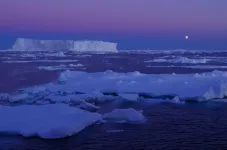(Press-News.org) BIRMINGHAM, Ala. – The University of Alabama at Birmingham startup company Endomimetics, LLC, has received a $2.8 million Small Business Innovation Research Phase II grant from National Institute of Neurological Disorders and Stroke.
Under the grant, Endomimetics co-founders Ho-Wook Jun, Ph.D., a professor in the UAB Department of Biomedical Engineering, and Brigitta Brott, M.D., a professor in the UAB Department of Medicine Division of Cardiovascular Disease, will collaborate with Ramanathan Kadirvel, Ph.D., a professor of neurosurgery and radiology at Mayo Clinic, and David Kallmes, M.D., a professor of radiology at Mayo Clinic, Rochester, Minnesota, to develop a BionanomatrixTM coating for flow diverters in the brain.
More than 3 percent of the United States population — or about 6 million people — have an intracranial aneurysm, a bulge or ballooning in the wall of a blood vessel in the brain. The most feared risk for these people is rupture of the aneurysm, with devastating consequences.
In the past 15 years, intraluminal flow diversion devices have been used successfully as aneurysm therapy. Recent case studies have demonstrated high rates of long-term aneurysm occlusion by the flow diverters; but the most serious concern, and a significant cause of death after neurointervention, is a thromboembolism, a clot that blocks a blood vessel.
Thus, all patients treated with flow diverter devices require long-term antiplatelet therapy — a minimum of three months post-procedure — to reduce the body’s ability to form blood clots. If aneurysm occlusion could be accelerated and thrombus formation minimized, this could shorten the need for antiplatelet therapy and decrease risks of embolisms and bleeding.
Recent studies strongly suggest that complete endothelialization of any occlusion device is essential for durable occlusion, but with standard flow diverter technology, this endothelialization is prolonged. The Small Business Innovation Research grant will support research to evaluate whether applying Endomimetics’ Bionanomatrix coating to flow diverters will accelerate post-implantation healing.
The Endomimetics Bionanomatrix provides a native endothelium-mimicking environment that enhances endothelialization through five synergistic elements. The Bionanomatrix material: 1) Recruits endothelial cells from adjacent tissues through sustained release of nitric oxide; 2) Promotes endothelial cell retention through its adhesive ligands for endothelial cells; 3) Reduces inflammatory responses, and inhibits platelet adhesion and aggregation, through release of nitric oxide; 4) Is completely formed from biocompatible peptide-based materials; and 5) Is formed in a self-assembly coating method through water evaporation that avoids using any organic solvents.
The Bionanomatrix approach is innovative because it targets key factors that improve durable aneurysm occlusion by flow diverters and promotes endothelialization on the flow diverter while reducing inflammatory responses and platelet adhesion, Jun says. This could support the millions of people who depend on flow diverters for healing after intercranial aneurysms.
“Our proposal is significant as it addresses a critical and unmet clinical need in brain aneurysm patients — aneurysm occlusion with inhibited thromboembolism,” said Joseph Garner, CEO of Endomimetics. “Successful completion of the proposed studies will prepare Endomimetics to seek approval from the United States Food and Drug Administration for clinical trials using Bionanomatrix-coated flow diverters.”
Garner says Endomimetics is in discussion with potential corporate partners to license the technology and add Bionanomatrix-coated flow diverters to their product lines.
At UAB, Medicine is a department in the Marnix E. Heersink School of Medicine, and Biomedical Engineering is a joint-department in the Heersink School of Medicine and the UAB School of Engineering.
END
UAB startup Endomimetics receives $2.8 million Small Business Innovation Research grant
The NIH grant will support development of a BionanomatrixTM coating for an aneurysm-therapy flow diverter in the brain.
2024-09-20
ELSE PRESS RELEASES FROM THIS DATE:
Scientists turn to human skeletons to explore origins of horseback riding
2024-09-20
As anyone who’s spent time in the saddle knows, riding a horse can be hard on your body. But can it change the way your skeleton looks?
The answer, according to archaeologists from the University of Colorado Boulder: It’s complicated. In a new study, the team drew on a wide range of evidence—from medical studies of modern equestrians to records of human remains across thousands of years.
The researchers concluded that horseback riding can, in fact, leave a mark on human skeletons, such as by subtly altering the shape of the hip joint. But those sorts of changes on their own can’t definitively reveal whether people have ridden ...
UCF receives prestigious Keck Foundation Award to advance spintronics technology
2024-09-20
UNIVERSITY OF CENTRAL FLORIDA
UCF Receives Prestigious Keck Foundation Award to Advance Spintronics Technology
The work could change the future of electronics, making them faster and more energy efficient.
ORLANDO, Sept. 20, 2024 – A team of researchers led by University of Central Florida Pegasus Professor of Physics Enrique Del Barco is working on a new project that could change the future of electronics, making them faster and more energy efficient.
The work is funded by a new $1.3 million award from the W.M. Keck Foundation, one of the nation’s ...
Cleveland Clinic study shows bariatric surgery outperforms GLP-1 diabetes drugs for kidney protection
2024-09-20
Cleveland Clinic Study Shows Bariatric Surgery Outperforms GLP-1 Diabetes Drugs for Kidney Protection
Bariatric surgery was shown to protect kidney function and reduce the risk of kidney failure in study participants when compared to GLP-1 medications
Friday, September 20, 2024, CLEVELAND: A Cleveland Clinic study showed that in patients with type 2 diabetes, obesity, and chronic kidney disease, bariatric surgery was associated with a significant decrease in the progression of chronic kidney disease compared to those who received GLP-1 diabetes medications. The paper was published in Annals ...
Study reveals large ocean heat storage efficiency during the last deglaciation
2024-09-20
As one of the largest heat reservoirs in the climate system, the global ocean absorbs more than 90% of the excess energy from ongoing anthropogenic warming. In the last century, the greatest warming in the ocean has occurred in the upper 500 m, with relatively weak warming in the deep ocean, corresponding to a small ocean heat storage efficiency of ~0.1.
Paleoceanographic observations, however, suggest that on long time scales, the deep ocean warming can be comparable to or larger than the surface ocean warming, with ocean heat storage efficiency during the last ...
Fever drives enhanced activity, mitochondrial damage in immune cells
2024-09-20
Fever temperatures rev up immune cell metabolism, proliferation and activity, but they also — in a particular subset of T cells — cause mitochondrial stress, DNA damage and cell death, Vanderbilt University Medical Center researchers have discovered.
The findings, published Sept. 20 in the journal Science Immunology, offer a mechanistic understanding for how cells respond to heat and could explain how chronic inflammation contributes to the development of cancer.
The impact of ...
A two-dose schedule could make HIV vaccines more effective
2024-09-20
One major reason why it has been difficult to develop an effective HIV vaccine is that the virus mutates very rapidly, allowing it to evade the antibody response generated by vaccines.
Several years ago, MIT researchers showed that administering a series of escalating doses of an HIV vaccine over a two-week period could help overcome a part of that challenge by generating larger quantities of neutralizing antibodies. However, a multidose vaccine regimen administered over a short time is not practical for mass vaccination campaigns.
In a new study, the researchers have now found that they ...
Wastewater monitoring can detect foodborne illness, researchers find
2024-09-20
UNIVERSITY PARK, Pa. — First used in the 1940s to monitor for polio, wastewater surveillance proved such a powerful disease monitoring tool that the U.S. Centers for Disease Control and Prevention (CDC) established the National Wastewater Surveillance System to support SARS-CoV-2 monitoring in September of 2020. Now, a team of scientists from Penn State and the Pennsylvania Department of Health have shown that domestic sewage monitoring is useful for a foodborne pathogen as well.
In findings published today (Sept. 19) in the Journal of Clinical ...
Kowalski, Salonvaara receive ASHRAE Distinguished Service Awards
2024-09-20
Building equipment and envelope scientists at the Department of Energy’s Oak Ridge National Laboratory were recognized for research excellence during the ASHRAE 2024 summer conference held in Indianapolis.
Stephen Kowalski and Mikael Salonvaara received the Distinguished Service Award, which salutes members who have served the society with distinction in chapter, regional and society activities. Kowalski and Salonvaara have each been active members of ASHRAE for more than 25 years and have supported the organization’s Technical and Standards Project Committees.
ASHRAE is the largest international professional organization ...
SkAI launched to further explore universe
2024-09-20
Funded by a five-year, $20 million grant from the U.S. National Science Foundation (NSF) and the Simons Foundation, the National Center for Supercomputing Applications is partnering with other academic institutions and federal laboratories in the Midwest to develop new artificial intelligence (AI) tools to advance astrophysics research and exploration of the universe.
Led by Northwestern University, the collaboration will establish the NSF-Simons AI Institute for the Sky or SkAI (pronounced “sky”), one of two AI research centers that will help astronomers better understand the cosmos.
Located close to NCSA’s home in Illinois, SkAI will ...
SLU researchers identify sex-based differences in immune responses against tumors
2024-09-20
ST. LOUIS — Researchers at Saint Louis University School of Medicine investigated differences in T-cell responses between male and female patients with lung cancer that may help direct future treatments. T-cell responses are part of the adaptive immune system, part of the body’s “smart system” that monitors for threats and fights them with customized defenses.
"Therapies that use the patient's immune system to fight their disease have a lot of potential to ...
LAST 30 PRESS RELEASES:
Geometry shapes life
A CRISPR screen reveals many previously unrecognized genes required for brain development and a new neurodevelopmental disorder
Hot flush treatment has anti-breast cancer activity, study finds
Securing AI systems against growing cybersecurity threats
Longest observation of an active solar region
Why nail-biting, procrastination and other self-sabotaging behaviors are rooted in survival instincts
Regional variations in mechanical properties of porcine leptomeninges
Artificial empathy in therapy and healthcare: advancements in interpersonal interaction technologies
Why some brains switch gears more efficiently than others
UVA’s Jundong Li wins ICDM’S 2025 Tao Li Award for data mining, machine learning
UVA’s low-power, high-performance computer power player Mircea Stan earns National Academy of Inventors fellowship
Not playing by the rules: USU researcher explores filamentous algae dynamics in rivers
Do our body clocks influence our risk of dementia?
Anthropologists offer new evidence of bipedalism in long-debated fossil discovery
Safer receipt paper from wood
Dosage-sensitive genes suggest no whole-genome duplications in ancestral angiosperm
First ancient human herpesvirus genomes document their deep history with humans
Why Some Bacteria Survive Antibiotics and How to Stop Them - New study reveals that bacteria can survive antibiotic treatment through two fundamentally different “shutdown modes”
UCLA study links scar healing to dangerous placenta condition
CHANGE-seq-BE finds off-target changes in the genome from base editors
The Journal of Nuclear Medicine Ahead-of-Print Tip Sheet: January 2, 2026
Delayed or absent first dose of measles, mumps, and rubella vaccination
Trends in US preterm birth rates by household income and race and ethnicity
Study identifies potential biomarker linked to progression and brain inflammation in multiple sclerosis
Many mothers in Norway do not show up for postnatal check-ups
Researchers want to find out why quick clay is so unstable
Superradiant spins show teamwork at the quantum scale
Cleveland Clinic Research links tumor bacteria to immunotherapy resistance in head and neck cancer
First Editorial of 2026: Resisting AI slop
Joint ground- and space-based observations reveal Saturn-mass rogue planet
[Press-News.org] UAB startup Endomimetics receives $2.8 million Small Business Innovation Research grantThe NIH grant will support development of a BionanomatrixTM coating for an aneurysm-therapy flow diverter in the brain.




